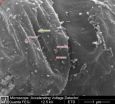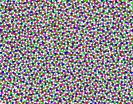(Press-News.org) There's more to dieting than just sheer willpower and self-control. The presence of friends, late night cravings or the temptation of alcohol can often simply be too strong to resist. Research led by Heather McKee of the University of Birmingham in the UK monitored the social and environmental factors that make people, who are following weight management programs, cheat. The study¹ is published in the Springer journal Annals of Behavioral Medicine.²
Eighty people who were either part of a weight-loss group or were dieting on their own participated in the one-week study. They were given mobile phones on which they kept an electronic diary of all the temptations that came their way, and the situations during which they gave in to these temptations. This helped the researchers to make a complete real-time record, known as 'ecological momentary assessment,' of participants' dietary temptations and lapses.
Participants lapsed just over 50 percent of the time when tempted, and were especially vulnerable at night. They were more likely to give in to alcoholic temptations than to eat a sugary snack or to overindulge. Their willpower was also influenced by the presence of others, regardless of whether a dietary temptation was unexpected or whether the dieter went looking for something to eat. The stronger the dietary temptation, the more likely a participant was to lapse. Not surprisingly, most participants reported that they were more aware of their eating behavior while keeping their diet diaries.
The findings could be valuable for dietary relapse and weight maintenance programs. They highlight the possible future use of mobile phone applications to support people who are dieting. Following a lapse in such programs, the findings also stress the importance of including specific coping mechanisms and reinforcing a person's self-efficacy, in other words, bolstering their belief in their own ability to reach their goals.
"The findings help piece together the complex jigsaw surrounding the daily predictors of dietary temptations and help us to better understand how dietary temptations and lapses operate," says McKee. "In the fight against obesity, we need to help people become more aware of the various personal, situational, and environmental factors that expose them to dietary temptations. In doing this, we can help them to develop the necessary skills to cope successfully with dietary temptations and prevent lapses."
INFORMATION:
References:
1. McKee, H.C., Ntoumanis, N., Taylor, I.M. (2014). An Ecological Momentary Assessment of Lapse Occurrences in Dieters, Annals of Behavioral Medicine, DOI 10.1007/s12160-014-9594-y
2. Annals of Behavioral Medicine is an official journal of the Society of Behavioral Medicine.
Tip to dieters: Beware of friends and late night cravings
Dieters more likely to give in to alcoholic temptations than to sugary snacks
2014-02-24
ELSE PRESS RELEASES FROM THIS DATE:
Novel assay developed for detecting ALK rearrangement in NSCLC
2014-02-24
DENVER – Researchers have developed a novel technique for detecting ALK rearrangements in non-small cell lung cancers (NSCLCs) that is more sensitive and easier to perform than currently available techniques. The technique can help enhance the routine practice of diagnostic ALK testing on NSCLCs, which is crucial for identifying patients with advanced NSCLC who are most likely to benefit from targeted therapy with an ALK inhibitor.
None of the current three routine methods used to detect ALK rearrangements in NSCLC is without drawbacks, especially for tissue specimens ...
A fast and effective mechanism to combat an aggressive cancer
2014-02-24
Ovarian cancer accounts for more deaths of American women than any other cancer of the female reproductive system. According to the American Cancer Society, one in 72 American women will be diagnosed with ovarian cancer, and one in 100 will ultimately die of the condition.
Now Prof. Dan Peer of Tel Aviv University's Department of Cell Research and Immunology has proposed a new strategy to tackle an aggressive subtype of ovarian cancer using a new nanoscale drug-delivery system designed to target specific cancer cells. He and his team – Keren Cohen and Rafi Emmanuel from ...
EARTH Magazine: Tsunamis from the sky
2014-02-24
Alexandria, VA – On a beautiful, clear June morning in 1954, a massive wave suddenly swept out of Lake Michigan killing at least seven people along the Chicago waterfront. At the time, the wave was attributed to a storm that had earlier passed over northern Lake Michigan, but how it came to swamp faraway Chicago, with no warning, was not understood.
The Great Lakes, along with the Mediterranean, Japan and many other parts of the world, have a long history of such waves, which have characteristics similar to tsunamis triggered by earthquakes or landslides.
Only recently, ...
Cardiovascular Institute researcher: Cancer drug may lower sudden cardiac death risk
2014-02-24
PROVIDENCE, R.I. – A researcher at the Cardiovascular Institute (CVI) at Rhode Island, The Miriam and Newport hospitals has found that a new class of drugs, originally developed to treat cancer, reduces sudden cardiac death risk after a heart attack. The findings were published online in advance of print in the Journal of the American College of Cardiology.
"Currently, there are limited options to reduce sudden cardiac death following a heart attack," said principal investigator Samuel C. Dudley, M.D., Ph.D., chief of cardiology at the CVI. "The benefit of most drugs ...
Toxic injection with elastic band
2014-02-24
This news release is available in German.
Bacteria have developed many different ways of smuggling their toxic cargo into cells. Tripartite Tc toxin complexes, which are used by bacteria like the plague pathogen Yersinia pestis and the insect pathogen Photorhabdus luminescens, are particularly unusual. Stefan Raunser from the Max Planck Institute of Molecular Physiology in Dortmund and his colleagues from the University of Freiburg have produced extremely accurate and detailed images of these "toxic injections"; they reveal from where the molecule complexes take ...
Precursor of multiple myeloma more common in blacks than whites, Mayo study finds
2014-02-24
ROCHESTER, Minn. — Feb. 24, 2014 — Blacks may be twice as likely as whites to develop multiple myeloma because they are more likely to have a precursor condition known as monoclonal gammopathy of undetermined significance (MGUS), a Mayo Clinic study has found. Not only is MGUS more common in blacks, but the type seen in the black population is also more apt to have features associated with a higher risk of progression to full-blown multiple myeloma, a cancer of a type of white blood cell in bone marrow.
The findings, which appear in the journal Leukemia, are from the ...
Higher risks among perinatal women with bipolar disorder
2014-02-24
PROVIDENCE, R.I. [Brown University] — Pregnant and postpartum women with bipolar disorder more frequently have significant mental health and early mothering challenges than other perinatal women undergoing psychiatric treatment, according to a study in the Journal of Affective Disorders. The findings indicate the importance of properly identifying the disorder and developing specific treatments for women during and after pregnancy, the lead author said.
"Similar to what you find with bipolar disorder in the nonperinatal population, the overall level of clinical severity ...
In the eye of a chicken, a new state of matter comes into view
2014-02-24
Along with eggs, soup and rubber toys, the list of the chicken's most lasting legacies may eventually include advanced materials such as self-organizing colloids, or optics that can transmit light with the efficiency of a crystal and the flexibility of a liquid.
The unusual arrangement of cells in a chicken's eye constitutes the first known biological occurrence of a potentially new state of matter known as "disordered hyperuniformity," according to researchers from Princeton University and Washington University in St. Louis. Research in the past decade has shown that ...
Watching how the brain works
2014-02-24
Coral Gables, Fla (Feb. 19, 2014) -- There are more than a trillion cells called neurons that form a labyrinth of connections in our brains. Each of these neurons contains millions of proteins that perform different functions. Exactly how individual proteins interact to form the complex networks of the brain still remains as a mystery that is just beginning to unravel.
For the first time, a group of scientists has been able to observe intact interactions between proteins, directly in the brain of a live animal. The new live imaging approach was developed by a team of ...
Costs vary widely for care of children with congenital heart defects across US hospitals
2014-02-24
Ann Arbor, Mich. – Costs of care differ significantly across hospitals for children born with heart defects, according to new research led by a University of Michigan researcher. Congenital heart defects are known to be the most common birth defects, impacting nearly 1 in every 100 births.
The cost of care for children with congenital heart disease undergoing surgical repair varied as much as nine times across a large group of U.S. children's hospitals, says lead author Sara K. Pasquali, M.D., M.H.S., associate professor of pediatrics at the University of Michigan Medical ...
LAST 30 PRESS RELEASES:
Tracing the quick synthesis of an industrially important catalyst
New software sheds light on cancer’s hidden genetic networks
UT Health San Antonio awarded $3 million in CPRIT grants to bolster cancer research and prevention efforts in South Texas
Third symposium spotlights global challenge of new contaminants in China’s fight against pollution
From straw to soil harmony: International team reveals how biochar supercharges carbon-smart farming
Myeloma: How AI is redrawing the map of cancer care
Manhattan E. Charurat, Ph.D., MHS invested as the Homer and Martha Gudelsky Distinguished Professor in Medicine at the University of Maryland School of Medicine
Insilico Medicine’s Pharma.AI Q4 Winter Launch Recap: Revolutionizing drug discovery with cutting-edge AI innovations, accelerating the path to pharmaceutical superintelligence
Nanoplastics have diet-dependent impacts on digestive system health
Brain neuron death occurs throughout life and increases with age, a natural human protein drug may halt neuron death in Alzheimer’s disease
SPIE and CLP announce the recipients of the 2025 Advanced Photonics Young Innovator Award
Lessons from the Caldor Fire’s Christmas Valley ‘Miracle’
Ant societies rose by trading individual protection for collective power
Research reveals how ancient viral DNA shapes early embryonic development
A molecular gatekeeper that controls protein synthesis
New ‘cloaking device’ concept to shield sensitive tech from magnetic fields
Researchers show impact of mountain building and climate change on alpine biodiversity
Study models the transition from Neanderthals to modern humans in Europe
University of Phoenix College of Doctoral Studies releases white paper on AI-driven skilling to reduce burnout and restore worker autonomy
AIs fail at the game of visual “telephone”
The levers for a sustainable food system
Potential changes in US homelessness by ending federal support for housing first programs
Vulnerability of large language models to prompt injection when providing medical advice
Researchers develop new system for high-energy-density, long-life, multi-electron transfer bromine-based flow batteries
Ending federal support for housing first programs could increase U.S. homelessness by 5% in one year, new JAMA study finds
New research uncovers molecular ‘safety switch’ shielding cancers from immune attack
Bacteria resisting viral infection can still sink carbon to ocean floor
Younger biological age may increase depression risk in older women during COVID-19
Bharat Innovates 2026 National Basecamp Showcases India’s Most Promising Deep-Tech Ventures
Here’s what determines whether your income level rises or falls
[Press-News.org] Tip to dieters: Beware of friends and late night cravingsDieters more likely to give in to alcoholic temptations than to sugary snacks




